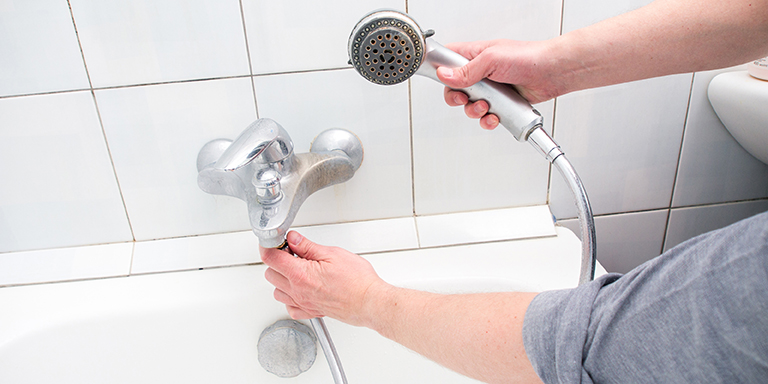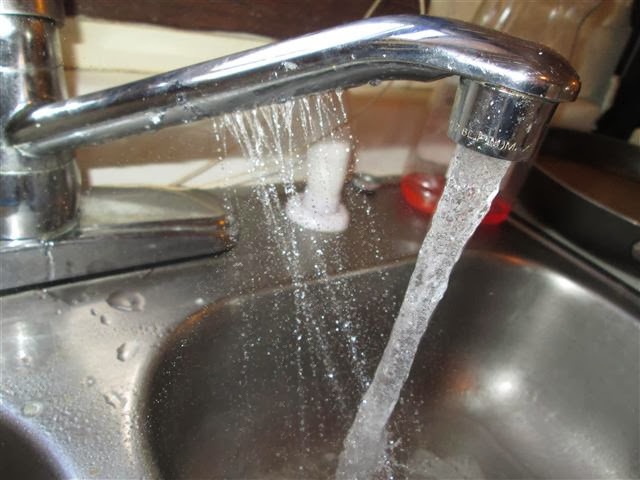What Dripping Faucets May Impact You
What Dripping Faucets May Impact You
Blog Article
Presented here below you can get a bunch of quality help and advice related to Health Risks Posed by Leaking Faucets.

Intro
A dripping tap could seem like a small aggravation, but its effects extend much past the periodic drip. Recognizing the impacts of a leaky tap is crucial for both home owners and the environment. In this article, we'll explore the different impacts of this common household concern and why addressing it immediately is important.
Root Causes Of Leaky Faucets
Dripping faucets can result from a range of elements, including damage, high water stress, and corrosion. With time, the constant use taps can cause worn-out seals and gaskets, creating leaks to establish. In addition, excessive water pressure can put strain on plumbing fixtures, causing leaks. Corrosion and rust can likewise damage tap parts, making them vulnerable to leak.
Water Wastefulness
One of the most substantial effects of a leaky tap is water wastage. Even a tiny drip can amount to gallons of drainage with time. This not just increases water expenses but also adds to water deficiency and ecological deterioration. Attending to dripping taps promptly is critical for saving this priceless source and lessening its influence on the earth.
Financial Influence
In addition to wasting water, leaky faucets can additionally have a substantial financial impact. Increased water bills are a straight consequence of water wastage, costing property owners hundreds of dollars annually. Furthermore, the expense of fixing water damages caused by leakages can be significant, especially if left neglected for a prolonged period.
Ecological Influence
The environmental influence of leaky taps expands past water waste. By saving water, property owners can add to more comprehensive efforts to mitigate water deficiency and safeguard all-natural environments. Sustainable choices such as rain harvesting and water-efficient fixtures can better minimize the environmental impact of family water use.
Technical Solutions
Advancements in innovation have resulted in the growth of clever faucets and water-saving devices that assist minimize water waste. Smart faucets make use of sensors to identify motion and change water circulation accordingly, decreasing waste without compromising ease. Water-saving devices such as aerators and low-flow showerheads are likewise efficient in saving water without endangering efficiency.
Global Point of views
While dripping taps may look like a localized problem, they add to wider worldwide obstacles such as water scarcity and climate change. In regions already encountering water stress and anxiety, every decline counts, making leakage avoidance and repair important. By adopting water-saving practices and investing in sustainable innovations, house owners can play their component in attending to these pushing international concerns.
Governing Measures
Government policies play a vital role in minimizing the impact of leaking taps and advertising water preservation. From developing codes that call for water-efficient fixtures to water-saving rewards and refunds, policymakers have a variety of devices at their disposal. By carrying out and applying these regulations, federal governments can make certain that home owners focus on water conservation in their lives.
Neighborhood Impact
Dealing with dripping faucets requires cumulative initiatives at the neighborhood level. By raising recognition regarding the significance of water conservation and giving resources for leakage detection and repair, neighborhood authorities can empower home owners to act. Initiatives such as water-saving discount programs and leak discovery projects can incentivize behavior modification and advertise accountable water usage.
Instance Studies
Real-life examples of the impact of leaky taps underscore the value of proactive upkeep and timely repair services. From water damages to escalating water bills, the effects of disregarding leakages can be severe. By sharing these case studies, homeowners can much better understand the relevance of addressing leaking taps promptly.
Educational Campaigns
Educational campaigns play a critical role in increasing recognition about the impacts of dripping faucets and advertising water preservation methods. Through workshops, seminars, and on the internet sources, house owners can discover just how to discover and fix leakages themselves. By equipping people with expertise and tools, educational campaigns can promote a society of liable water usage within areas.
Health Issues
Dripping taps can develop conducive environments for mold and mildew development, posing health dangers to passengers. The visibility of mold and mildew can aggravate respiratory issues and allergies, especially in prone people. In addition, water damages arising from leakages can endanger the architectural stability of structures and cause pricey fixings.
Do it yourself vs. Specialist Fixing
When faced with a leaky tap, homeowners typically dispute whether to try repair services themselves or employ an expert plumber. While DIY repair work can save cash, they might not constantly deal with the underlying issue effectively. Professional plumbers have the proficiency and equipment to detect and deal with leaks correctly, ensuring lasting remedies and comfort for property owners.
Preventive Measures
Protecting against leaking faucets calls for routine maintenance and aggressive procedures. Easy tasks such as changing worn-out washing machines and seals can stop leaks from developing. In addition, upgrading to high-quality components and decreasing water stress can assist lengthen the life expectancy of faucets and lessen the risk of leakages.
Final thought
Finally, the impacts of a leaky tap extend far past the occasional drip. From water wastefulness and boosted water bills to health and wellness concerns and ecological impact, the repercussions of ignoring leakages can be substantial. By attending to dripping faucets without delay and embracing water-saving techniques, property owners can minimize these effects and add to a more sustainable future.
Why You Shouldn’t Ignore a Leaky Faucet in Your Home
What Causes a Leaky Faucet?
Various factors can cause a leak, from loose and worn-out parts to corrosion. Your faucet has four essential components from which most plumbing issues will stem: the O-ring, the valve seat, the washer and the gasket.
What Is an O-Ring?
The O-ring is a stem screw that fastens parts of the faucet in place, preventing water from leaking out of the spout. Depending on your faucet type, the stem might have multiple O-rings. Water will drip from the faucet’s handles and base if this part breaks or deteriorates.
What Is a Valve Seat?
The valve seat controls the flow and temperature of the water. Found at the base of the handle, it works as a seal for the faucet’s stem. The valve seat ensures the water is allowed to flow or is blocked as the handles dictate. You’ll know it’s malfunctioning when water leaks from your faucet’s sides.
What Is a Gasket?
The gasket is found between the water inlet and the valve stem. It creates a seal between the faucet and the sink, holding its joints by aerators attached to the stem’s head. Water will trickle out from the base if the gasket isn’t working.
What Is a Washer?
The washer secures the handles and prevents leakage, serving a similar purpose to the O-ring. While the O-ring is ordinarily round and made from an elastic material, such as rubber, the washer is square-shaped and composed of brass, copper and other hard metals. If it malfunctions, corrodes or has been improperly installed, water will leak out of the handles, causing that incessant faucet drip.
Why Is a Leaky Faucet Dangerous?
A leaky faucet left alone for too long can have significant consequences.
Pest Infestations
Since bugs and rodents gravitate towards the scent of water, a leaky faucet will draw pests to your sink. Both are looking for leaks accessible through crawl spaces, which a faucet provides. If you leave water dripping for too long, you run the risk of an infestation.
Rust
If one of the faucet parts has started to corrode, the resulting rust can spread to your pipes and valves with startling speed. The rust might even lead to cracks or other impairments, resulting in more severe plumbing issues.
Your sink could also sustain damage from a leaky faucet. The water in your tap possesses sparse elements of calcium and iron that can stain your sink with repeated and prolonged exposure. Once those elements in the water have been open to the air for some time, your sink will start to rust, creating marks that can be difficult to remove.
https://www.tomsmechanical.com/blog/why-you-shouldnt-ignore-a-leaky-faucet-in-your-home

We were introduced to that article on Here's How to Fix a Leaky Faucet from a buddy on our other web property. Make sure you set aside a second to share this page if you appreciated it. I thank you for reading our article about Potential Health Risks Associated With Leaky Faucets.
Report this page